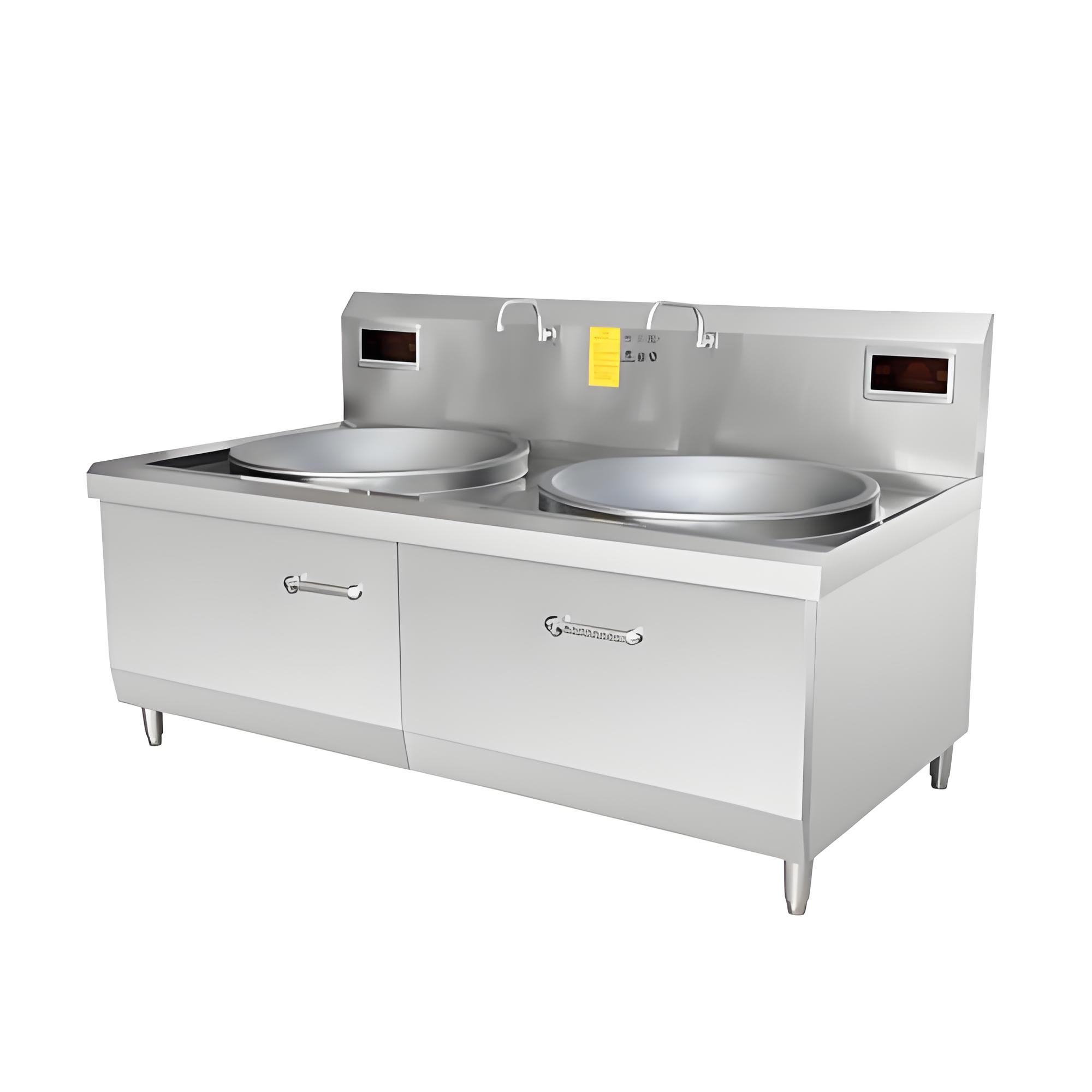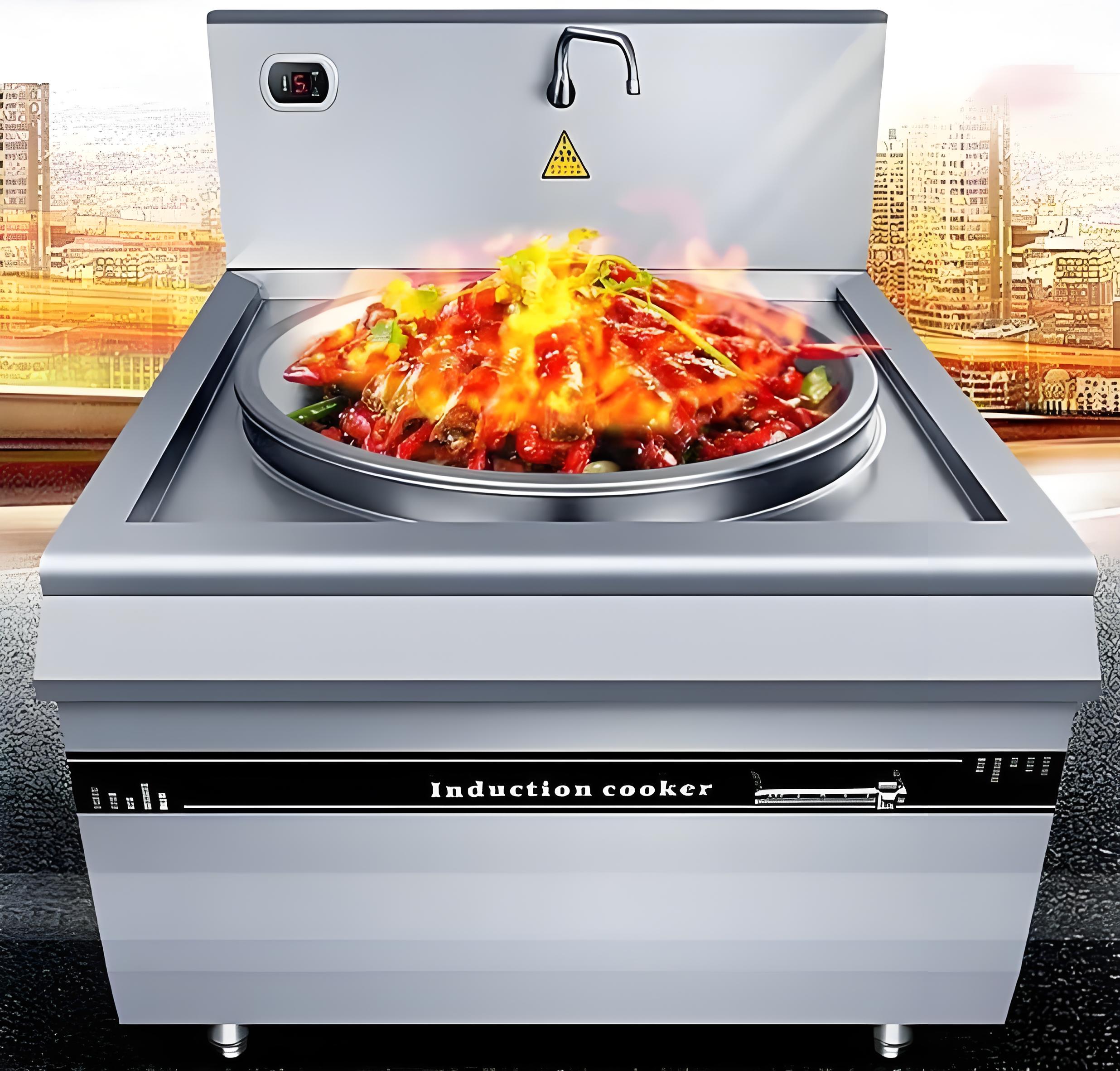When people meet me at trade shows or kitchen upgrade consultations, they often expect flashy sales pitches or rehearsed energy stats. But after more than 15 years working hands-on in the commercial cooking equipment field — from big-city hotels to local bakeries — I’ve found that most business owners aren’t just looking for marketing numbers. What they really want is a practical way to measure and understand if an induction cooker is truly energy-efficient for their kitchen.

So when I see someone searching, “how to evaluate the energy efficiency of a commercial induction cooker,” I immediately recognize it’s not just about specs. It’s about trying to make an informed investment that cuts operating costs, meets compliance standards, and doesn’t backfire with surprise maintenance or electricity bills.
If you’re trying to figure out exactly how to gauge an induction cooker’s energy performance — beyond glossy brochures — this guide is for you. I’ll draw on my years of helping kitchen owners run the numbers, spot pitfalls, and ensure their purchase truly pays off.
Why Understanding This Matters More Now Than Ever
Not long ago, many commercial kitchens didn’t worry much about the actual efficiency of their cooking gear. Gas was cheap and nobody measured how many BTUs vanished into the air. But these days, the game has changed completely.
Here’s why being able to evaluate energy efficiency is so crucial right now:
Utility prices keep rising in most countries. Electricity and gas bills take bigger bites out of margins every year.
Local energy codes & environmental standards are tightening. Some regions offer rebates for efficient electric gear, while others penalize high-emission operations.
Customers and staff care more about sustainability. A cooler, cleaner kitchen can be a selling point for hiring and for marketing to eco-minded diners.
Long-term profitability hinges on these savings. A small percentage improvement translates to tens of thousands saved over the lifetime of your equipment.
So while it sounds like a technical topic, evaluating induction energy efficiency is really about keeping your business competitive, comfortable, and compliant.
What Exactly Are We Trying to Measure?
When I walk into a client’s kitchen to help assess energy use, I usually explain it this way:
We’re not just talking about the electrical rating on the sticker (like 10kW). That only tells you the maximum power draw, not how effectively it turns energy into cooked food.
What we care about are three things:
Thermal efficiency
How much of the input energy actually heats the pan (and food), versus escaping into the air?
Operational efficiency
How quickly and precisely does it reach temperature, and does it maintain it without wild swings?
Total energy footprint over time
Including indirect effects like lower HVAC load (cooler kitchen) and shorter cooking cycles.
By digging into these, we get a real-world sense of whether the induction cooker is as energy-smart as promised.

The Main Ways I Evaluate Energy Efficiency
Let’s go through the core approaches I use in professional kitchen audits or consultations. These are practical — you can apply them whether you’re comparing new models or checking your current setup.
1. Look for Verified Efficiency Standards or Certifications
The fastest first step is checking if the equipment carries recognized efficiency certifications. This shows it’s been independently tested, not just manufacturer-claimed.
For example:
| Certification | What It Tells You | Typical Region |
|---|---|---|
| ENERGY STAR | Meets strict efficiency standards | US, Canada |
| CE + EcoDesign | Meets EU energy & environmental rules | Europe |
| China Energy Label | Shows rated efficiency class (1–5) | China |
2. Check the Actual Power Consumption vs. Delivered Heat
Here’s where we get a bit more technical (but still kitchen-friendly).
For gas, you might look at BTU input vs. actual cooking impact. For induction, we focus on:
Input power draw (kW) from the nameplate or measured with a clamp meter.
Time to perform standard tasks, like boiling 5 liters of water.
In practice, we often do a test boil. Example from a hotel kitchen I recently assessed:
| Cooker Type | Power Rating | Time to Boil 5L Water | Approx Energy Used |
|---|---|---|---|
| Gas (20kW burner) | 20 kW | 14 minutes | 4.67 kWh equiv. |
| Induction (10kW) | 10 kW | 8 minutes | 1.33 kWh |
3. Monitor Actual Utility Bills and Runtime Logs
For businesses already operating induction, I sometimes ask for:
Utility statements over several months.
Usage logs (or even staff notes) on hours run per day.
We can calculate effective kWh per kg of food or per service hour. This long-term operational view often uncovers huge hidden savings that make the ROI clear.

4. Consider Secondary Savings: HVAC and Ventilation
One area that’s easy to overlook: with induction, far less heat is dumped into the kitchen air. That means:
Your exhaust fans run less, saving electricity.
Your air conditioning (especially in warm climates) doesn’t have to work as hard to cool the kitchen.
Many of my clients see 10–20% drops in HVAC energy costs after switching heavy cooklines from gas to induction.
5. Observe Kitchen Environment and Labor Impacts
It might sound soft, but I promise — your staff comfort directly affects productivity (and turnover costs). Kitchens running on induction are dramatically cooler, reducing fatigue and even minor heat-related accidents.
That indirect efficiency means more consistent output, fewer mistakes, and in some cases, lower insurance premiums.
A Simple “Efficiency Checklist” I Give My Clients
Over the years, I developed a quick list that I hand to chefs or owners considering induction. Here’s a simplified version you can apply:
| Question | Why It Matters |
|---|---|
| Is it certified (ENERGY STAR, CE + EcoDesign)? | Independent proof of efficiency |
| What’s the thermal efficiency rating (% of energy to pan)? | Tells you real conversion rate |
| How fast does it boil a known volume of water? | Reveals cooking speed & energy transfer |
| Does it reduce kitchen air temp vs. gas? | Cuts HVAC load & improves comfort |
| What do your monthly utility bills show after install? | Confirms true savings |
Practical Pitfalls to Watch Out For
Even among experienced buyers, I’ve seen some common traps when evaluating induction efficiency.
Over-focusing on Nameplate kW
A 15kW induction isn’t automatically better than a 10kW. Efficiency is about how well it turns power into cooking heat, not just raw draw. Poorly designed induction units can waste energy through inefficient coils or bad pan detection.
Ignoring Pan Quality
Induction needs good contact. Cheap or warped pans don’t sit flat, losing thermal transfer efficiency. I’ve watched a kitchen save $200/month just by switching to heavier, flat-bottomed cookware.

Forgetting to Check Circuit Loads
If your building wiring struggles, the unit might “throttle down” under load, running inefficiently. Always have a licensed electrician check your panel.
How I Help Clients Run Real ROI Calculations
Because I do a lot of Google SEO consulting for manufacturers, I see many calculator widgets online that promise ROI. But most are over-simplified.
When I work with restaurants, I build a tailored spreadsheet that factors in:
Energy costs per kWh vs. per m³ of gas in their region
Estimated runtime hours per day
Time savings on cooking (labor hours = money)
Lower HVAC energy demand
Any rebates for switching
This holistic view often shows payback times of 1.5 to 3 years, after which the savings keep compounding.
A Few Real-World Examples From My Clients
So you see it’s not just theory. Here are short snapshots from kitchens I’ve helped:
| Client Type | What We Switched | Outcome After 12 Months |
|---|---|---|
| Mid-size canteen | 4 gas burners → 4 induction | Energy bills dropped 32%, kitchen 6°C cooler |
| Hotel buffet line | 3 induction wok stations | Saved $11,000/yr in electricity & HVAC combined |
| Small bakery prep | Portable induction vs. countertop gas | Cut utility costs by 27%, staff fatigue down |
If you’re running a large operation or really want scientific rigor, here are a few tools we use in big kitchens:
Infrared thermography
To see exactly where heat is going — reveals leaks, hotspots, and wasted energy.
Power loggers / data loggers
These track exact kW use over days or weeks.
Cooking tests with calibrated temperature probes
For precise heating curves.
Most small businesses don’t need this level, but for major chains, it’s worth the investment.

What Efficiency Really Means for Your Business
If I had to distill everything I’ve learned after watching hundreds of induction installs succeed (and a few fail), it’s this:
Energy efficiency isn’t just a technical figure — it’s a doorway to a cooler, safer, more profitable kitchen.
When you carefully evaluate induction through certifications, actual cooking tests, long-term utility data, and staff experience, you uncover hidden savings that often dwarf the initial cost difference versus gas.
If you do it right, the question changes from “Should I invest in energy-efficient induction?” to “How soon can I convert more of my kitchen to take advantage of this?”
Related Questions
Q: Is an induction cooker’s efficiency affected by load size?
Yes. Like all systems, it’s most efficient near its designed capacity. Undersized pans on a large coil waste some energy. Always match cookware to coil size.
Q: What’s the average lifespan of a commercial induction unit?
10–15 years with minimal maintenance, provided you keep fans clean and avoid spills into vents.
Q: How long does it really take to break even?
For most mid-volume kitchens, about 2–3 years. High-volume operations sometimes see ROI in under 18 months.
Q: Can I get rebates for buying an efficient induction cooker?
Many local utilities or governments offer them. Always check — I’ve helped clients get $1,000–$3,000 back just for upgrading.





